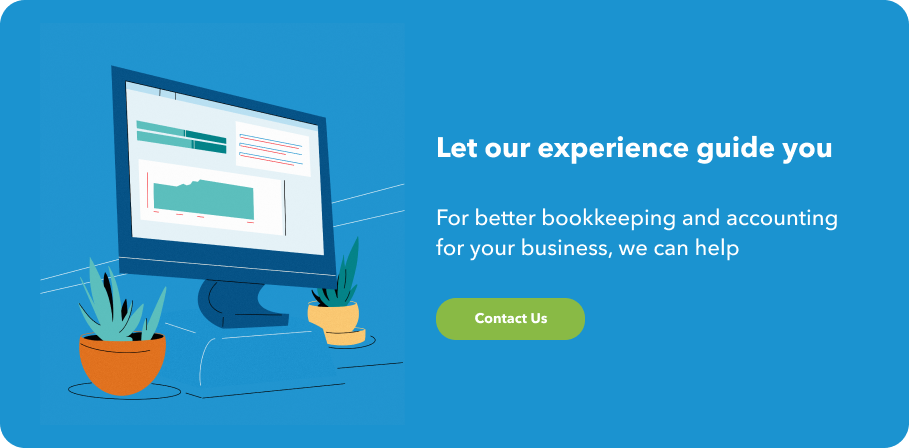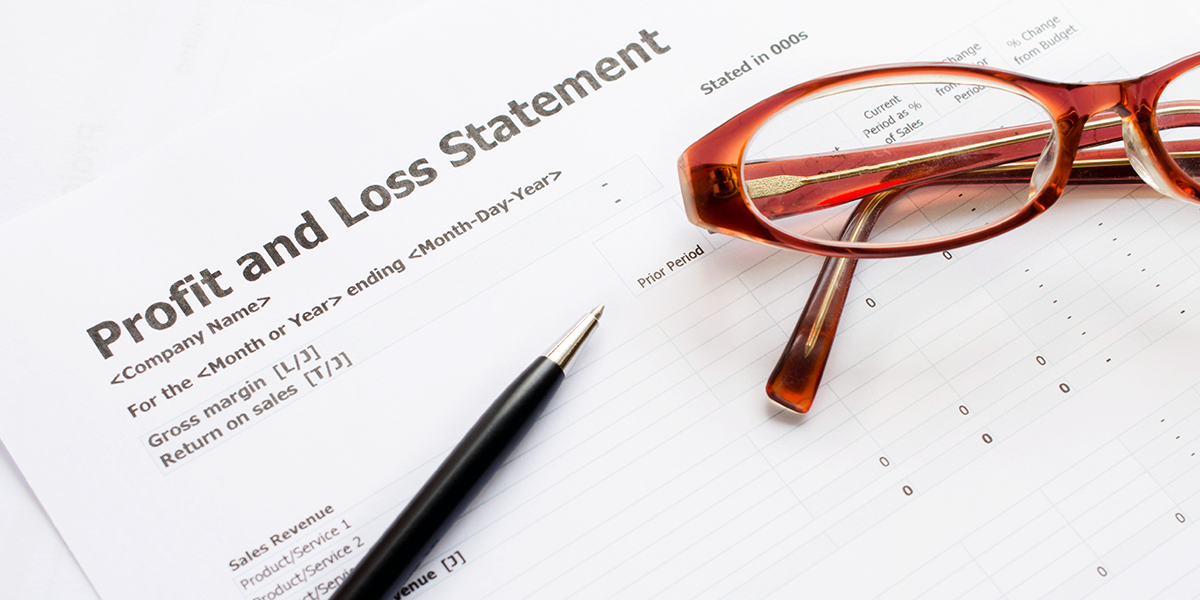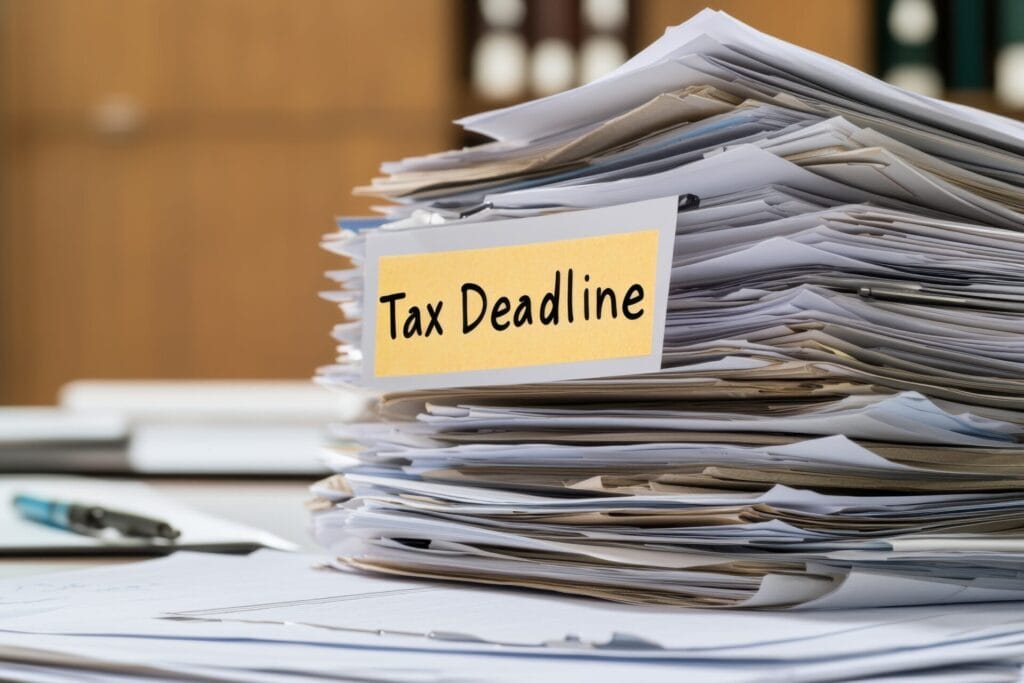At indinero, we believe accounting supports business. We partner with our clients, and good partnerships require excellent communication. If a business owner doesn’t understand an accounting term, we don’t use another accounting term to explain it. We specialize in accountants who speak business to business owners and CEOs.
Sometimes there’s just no avoiding accounting speak. One business area with lots of corporate accounting terms is preparing the three essential (3E) financial reports: the profit & loss statement, the balance sheet, and the cash flow statement.
In this article, you’ll find the essential information to 38 FAQs about business financial statements and links to further reading.
Maybe you’ve got a specific question in mind already? Check out links to all the questions here to jump ahead and around to your heart’s content.
Financial Statement FAQs
- What is a business financial statement?
- The business financial statement defined
- Who uses business financial statements?
- When are business financials used?
- How do managers use financial statements?
- Are CFOs responsible for preparing business financials?
- What do financial statements look like?
- What’s on financial statements that are so valuable?
- Which business financial statements are used for budgeting?
- What are budgeted financial statements?
- What’s the difference between a consolidated and a combined financial statement?
- How do you read financial statements?
- Who reads your 3E business financial statements?
Income Statement FAQs
- What is an income statement?
- What is a profit & loss statement?
- What goes on an income statement?
- What is a single-step income statement?
- What is a multi-step income statement?
- What is a comprehensive income statement?
- How do I read an income statement?
Balance Sheet FAQs
- What is a balance sheet?
- How does a balance sheet differ from an income statement?
- What goes on a balance sheet?
- What is the balance sheet equation?
- What is a classified balance sheet?
- How is the P&L net income number related to the retained earnings number on a balance sheet?
- How do you prepare a balance sheet?
- What is a GAAP vs. IFRS balance sheet?
- Do nonprofit organizations use balance sheets?
Cash Flow Statement FAQs
- What is a cash flow statement?
- What goes on a cash flow statement?
- What is a cash flow statement direct method?
- What is the indirect method of accounting for cash flow?
- How to read a cash flow statement?
- How do income statements and a statement of cash flows differ?
- How are accounts payable handled on a cash flow statement?
- How do you prepare a cash flow statement?
- What is the difference between a GAAP and IFRS cash flow statement?
If you have a specific question about how to get the most out of your business financials, indinero’s accounting and tax experts are here to help.
FAQ 1. What is a business financial statement?
A statement has different meanings in different contexts. To an English teacher, a statement is a verbal or written expression. To make a statement for a jeweler is to create a stand-out pair of earrings. To a bank, a statement is a document that states debits and credits to a bank or other financial institution. Here’s a definition of a business financial statement.
FAQ 2. The business financial statement defined
According to accounting standards, a financial report presents a company’s assets, liabilities, income, expenses, equity, shareholder position, and cash flow in a period (i.e., month, quarter, or year).
“I tell people who aren’t familiar with financial statements to think of them as a story that tells the history, current events, and possible future of a business. The story has great moments and times that the company had to overcome. Our job is to help our client tell their story well. The P&L is the fast-moving part of the story, where we see a progression of events, and the balance sheet is the backstory that sets the stage for the statement of cash flows. The cash flow tells us how many pages will be added to the story each month.” – Clifford Tong, Director of Accounting Services
FAQ 3. Who uses business financial statements?
Internal and external parties use your company’s business financials. Business owners, CEOs, CFOs, and other managers use business financial statements to plan and adjust the plan to reach business goals. Outside the organization, investors, analysts, lenders, and government agencies use the three main business financial statements to understand a company’s financial health better.
FAQ 4. When are business financials used?
Typically, the three essential business financial reports—income statement, balance sheet, and cash flow statement—are reviewed monthly. During uncertain times, these can be reviewed monthly by company management. Business financials are an integral part of budgeting, managing, and reporting your company’s financial activities, profit, value, and creditworthiness.
FAQ 5. How do managers use financial statements?
Managers use financial reports to create a budget and to measure performance against that plan throughout a fiscal year. Managers can better understand how well they are using resources, plan for the future, and make adjustments to the budget and strategic plan based on the finances and performance of a department, project, or team. Finally, well-prepared business financials communicate to stakeholders and the general public how the company is doing financially.
FAQ 6. Are CFOs responsible for preparing business financials?
Typically an accountant familiar with your business prepares the business financials for investors, creditors, government agencies, or taxes. A CFO or controller may be responsible for overseeing the accounting staff to ensure the integrity of the financial information and monthly reporting that informs the business financials.
FAQ 7. What do financial statements look like?
The primary financial statements (balance sheet, income statement, and cash flow statement) are a set of three (we’ll refer to them as ‘E3’). Each report breaks out specific information depending on the statement’s purpose. Generally, the data is grouped into two columns with a line item (i.e., revenue). An amount (typically a dollar amount) and each section are totaled. Quickbooks put together templates and guidance on how to fill out the E3.
Everyone starts somewhere with business operations. We put together a guide on understanding your finances to get you off and running!
FAQ 8. What’s on financial statements that are so valuable?
For the uninitiated, financial statements appear simple enough at first glance. They are typically neat and organized so that the practiced eye can scan for specific information or a trend. It takes knowledge and experience to create the E3 financial statements.
Remember that business financial statements are standardized reports so that creditors and government agencies such as the IRS or SEC can compare apples to apples within an industry or analyze a company against its strategy, or forecast profitability in the future for one or many companies.
In the next section, we’ll answer frequently asked questions about the income statement, balance sheet, and statement of cash flows.
FAQ 9. What is an income statement?
An income statement details the total revenues earned for the reporting period, the total expenses incurred in the same period. Expenses are subtracted from revenues to show a profit (net income) or loss (net loss). An income statement is also referred to as a statement of operations, a statement of income, or a profit & loss statement.
FAQ 10. What is a profit & loss statement?
A profit & loss (P&L) statement (also commonly referred to as an Income Statement) summarizes revenues and expenses from business transactions in a period (a month, quarter, or year). If the revenues are greater than expenses, your P&L will show a profit (net income). If not, your P&L shows a net loss.
FAQ 11. What goes on an income statement?
Key financial information shown on an income statement includes: costs of goods sold (COGS), depreciation, expenditure (costs of doing business), operating costs (not directly related to products or services), gains, gross profit, net income, non-operating revenue, operating revenue, and owners draw.
To calculate net income or loss, use the following formula:
Net Income = (Revenue + Gains) – (Expenses + Losses)
Note: How this information is displayed and calculated on an income statement matters. Take a look at this example from Quickbooks.
FAQ 12. What is a single-step income statement?
A single-step income statement subtracts expenses from revenues in a single step. Smaller, less complex businesses typically enjoy the simplicity of this type of income statement. However, there are critical times when a sole proprietorship may need to create a multi-step income statement.
FAQ 13. What is a multi-step income statement?
An income statement reveals how a company’s activities generated a profit. A multi-step income statement provides more detail because it distinguishes between revenues and expenses related to operations and those not directly related to operating activities.
Freshbooks outlines the three formulas used to calculate net income on a multi-step income statement:
The multi-step income statement uses three different accounting formulas to arrive at the net income:
1. GROSS PROFIT = NET SALES – COST OF GOODS SOLD
The cost of goods sold gets subtracted from net sales, resulting in gross profit.
2. OPERATING INCOME = GROSS PROFIT – OPERATING EXPENSES
Operating expenses get subtracted from gross profit; for the operating income.
3. NET INCOME = OPERATING INCOME + NON-OPERATING ITEMS
Operating income gets added to the net non-operating revenues, gains, expenses, and losses. This final figure gives the net income or net loss of the business for the reporting period.
FAQ 14. What is a comprehensive income statement?
A statement of comprehensive income is an income statement and other comprehensive income (OCI). OCI refers to gains and losses in the value of assets like pension or retirement funds or debt securities.
FAQ 15. How to read an income statement?
Income statements are read either vertically or horizontally. If you read an income statement from top to bottom (vertically), you compare the size (represented as a percentage) of line items to their totals. The horizontal way to read the income statement compares the dollar amounts for line items over time (Q1 vs. Q2). Horizontal analysis is helpful to analysts and investors looking for a company’s financial trends and growth patterns.
Are you getting ready for fundraising? Avoid costly misunderstandings with the help of our guide to reports investors are looking for.
FAQ 16. What is a balance sheet?
A balance sheet is one of the 3E business financial statements because it shows a company’s assets, liabilities, and owner’s equity. The balance sheet is also called a statement of financial position.
FAQ 17. How does a balance sheet differ from an income statement?
A balance sheet and income statement differ in many ways, including the information included in each report, the calculations, the time frame, and how each statement is analyzed. For example, an income statement will show if a company has the revenue to cover its expenses, and the balance sheet tells whether or not a company is creditworthy. Likewise, a balance sheet determines a company’s debt to equity ratio, and an income statement provides insight into a company’s performance (net profit or loss).
“The balance sheet reflects data that flows through from the income statement and reflects the condensed summary of a potentially huge number of journal entries.” – Robert Shaftoe
FAQ 18. What goes on a balance sheet?
The critical elements of a balance sheet include current assets (i.e., cash and cash equivalents, accounts receivable, inventory, and short-term securities), non-current assets (i.e., long-term securities, property, intangible assets, other non-current assets), current liabilities (i.e., accounts payable, accrued expenses, deferred revenue, current portion of long-term debt), non-current liabilities (i.e., deferred revenue, long-term lease, long-term debt), and shareholder’s equity (i.e., common stock, preferred stock, treasury stock, and retained earnings).
FAQ 19. What is the balance sheet equation?
A balance sheet must balance. The balance sheet equation determines the order of information:
Assets = Liabilities + Owners’ Equity
The balance sheet equation can also look like the following:
Owners’ Equity = Liabilities – Assets
or
Liabilities = Assets – Owners’ Equity
FAQ 20. What is a classified balance sheet?
A classified balance sheet will segment the information according to standard (or specialized) classifications of assets, liabilities, or owner’s equity. The most common categories include current assets, long-term investments, fixed assets, intangible assets, other assets, current liabilities, long-term liabilities, and shareholders’ equity.
FAQ 21. How is the P&L net income number related to the retained earnings number on a balance sheet?
Net income or net earnings derived from the income statement becomes the retained earnings on a balance sheet listed under liabilities as shareholders’ equity. However, retained earnings and net income are not the same.
Retained Earnings =
+ Retained Earnings at the beginning of the accounting period
+ Net Profit ((-) or Net Loss) during an accounting period
– Dividends Paid (both Cash Dividends and Stock Dividends)
FAQ 22. How do you prepare a balance sheet?
To prepare a balance sheet, start by determining a reporting date and period. Public companies report quarterly, and the reporting date is the final day of the reporting period. Your Balance Sheet will need to be arranged by GAAP or IFRS standards and include two main headers. The first is assets. The following combine liabilities and equity. Under each heading are the subheaders for current and non-current line items listed of liquidity followed by the total.
For freelancers tracking assets, liabilities, income, expenses, and capital on separate ledgers, you can prepare a balance sheet using excel, but for most SMEs, accounting software is the most efficient way to produce an accurate balance sheet.
FAQ 23. What is a GAAP vs. IFRS balance sheet?
A balance sheet lists assets, liabilities, and equity as line items. On a GAAP balance sheet, current items are listed first in order of liquidity (most liquid to least liquid). An IFRS balance sheet order lists non-current assets, current assets, owners’ equity, non-current liabilities, and current liabilities from least liquid to most liquid.
GAAP is short for generally accepted accounting principles. In the U.S., a private nonprofit organization called the Finance Accounting Standards Board (FASB) oversees and guides how to prepare financial statements to
IFRS is short for international financial reporting standards. IFRS is the global accounting standard. The IFRS Foundation created a brief video to explain what the international accounting standards mean for business.
FAQ 24. Do nonprofit organizations use balance sheets?
Yes, they do! A not-for-profit balance sheet is also called a statement of financial position. The statement has three sections: assets, liabilities, and net assets. Net assets are simply the difference between assets and liabilities. Nonprofits use financial statements to manage their functional and program expenses, budgeting, and reporting to stakeholders.
Get a deeper dive into your financial statements from our accounting experts. Schedule a call today.
FAQ 25. What is a cash flow statement?
A cash flow statement is one of three essential business financials. The cash flow statement records how a company earns (inflow) and expends (outflow) cash for a given time.
FAQ 26. What goes on a cash flow statement?
A cash flow statement (aka the statement of cash flows) displays operating cash flow, investing cash flow, and financing cash flow. There are differences in the categorization of interest and dividends between GAAP and IFRS standards that impact where they appear on the statement.
FAQ 27. What is a cash flow statement direct method?
The direct method of presenting a statement of cash flows breaks down operating activities into the following sections:
- Cash collected from customers
- Interest and dividends received
- Cash paid to employees
- Cash paid to suppliers
- Interest paid
- Income taxes paid
The direct method culls data directly from business transactions recorded in specific accounts rather than from the balance sheet or income statement.
FAQ 28. What is the indirect method of accounting for cash flow?
The indirect method of presenting a statement of cash flows is derived from the balance sheet to show the amount of cash generated by operating activities. Preparers prefer the indirect method cash flow statement, but analysts like the direct method because they seek insight into how cash flows through a business.
FAQ 29. How to read a cash flow statement?
If you know how to read one, a cash flow statement details where income is coming from (i.e., operating, investing, or financing activities). Investors and managers alike look for positive cash flow (more coming in than going out) or negative (more going out than coming in). A negative cash flow can mean an income and expense mismatch or that the company is laying the groundwork for future growth.
If you have the time, watch this 22-minute video that walks you through a cash flow statement.
FAQ 30. How do income statements and a statement of cash flows differ?
When an income statement shows a profit, the cash flow statement will detail where cash was generated or lost during a given period. However, a cash flow statement is much more ‘here and now,’ whereas an income statement is more comprehensive and requires more judgment to put together. The income statement and cash flow statement are concerned with a company’s positive or negative financial position but in different ways.
FAQ 31. How are accounts payable handled on a cash flow statement?
On an income statement, the accounts payable (AP)—the amount you owe for goods and services incurred—balance is subtracted (a loss) from income. On a cash flow statement, the net income from the income statement is at the top and what follows is cash that comes in (accounts receivable) or out (accounts payable) over some time (i.e., month, quarter, or year). Accounts payable are added back into net income on a statement of cash flows because AP represents an amount paid in cash.
FAQ 32. How do you prepare a cash flow statement?
To prepare a cash flow statement, you’ll first need to determine which method—direct or indirect—is used to display financial information. Once your method is selected, you’ll need specific information from the income statement, balance sheet, accounts, or journal entries, depending on your method.
FAQ 33. What is the difference between a GAAP and IFRS cash flow statement?
GAAP and IFRS have different preferences for presenting interest and dividends on a cash flow statement. In the U.S., GAAP cash flow lists interest under operating activities, dividends paid under financing activities, and dividends received under operating activities.
When IFRS is the standard, Interest paid can appear under either the operating or financing section of the cash flow statement and interest received in the operating or investing sections. Similarly, under IFRS, dividends paid can be listed as either operating or financing activities and dividends received in the operating or investing section.
FAQ 34. Which business financial statements are used for budgeting?
All 3E business financial statements are used for budgeting purposes. Financial planning requires continuous decisions based on a company’s current financial position within a larger context (i.e., the market, seasonal changes, political disruptions). Financial statements provide the recent picture for managers to determine what’s needed.
FAQ 35. What are budgeted financial statements?
Budgeting with the help of business financial statements is a process not to be confused with budgeted financial statements. Budgeted financial statements are a set of four, including income statements, balance sheets, statements of cash flows, and statements of retained earnings. These eventually become the “budget vs. actual” financial statement.
FAQ 36. What’s the difference between a consolidated and a combined financial statement?
Parent companies can either include their subsidiaries in their consolidated (one entity) financial reports or combine the different financial results of the parent company and its subsidiaries in one document.
FAQ 37. How do you read financial statements?
More of a visual or auditory learner? Watch this 13-minute video on how to read the financial statements of big-name brands like Disney and Apple.
FAQ 38. Who reads your 3E business financial statements?
Company managers use your company’s 3E business financial statements, investors, customers, employees, government agencies, rating agencies, lenders, suppliers, analysts, and competitors to understand your financial position now and in the future. Do you feel more confident reading your 3E financial statements currently?
Leave the corporate accounting to the experts
We hope these FAQs have given you a better understanding of what business financial statements are and a little better idea of how to use them to your business’s advantage.
You’re hungry to learn all that you can about optimizing your company’s performance because you know how competitive doing business is today. We’re all for learning more about accounting, but there comes a time when you’re better off leaving corporate accounting to the experts.
So put down your phone and grow your business! We can handle your financial statements. Schedule a call.

Quick Note: This article is provided for informational purposes only, and is not legal, financial, accounting, or tax advice. You should consult appropriate professionals for advice on your specific situation. indinero assumes no liability for actions taken in reliance upon the information contained herein.





